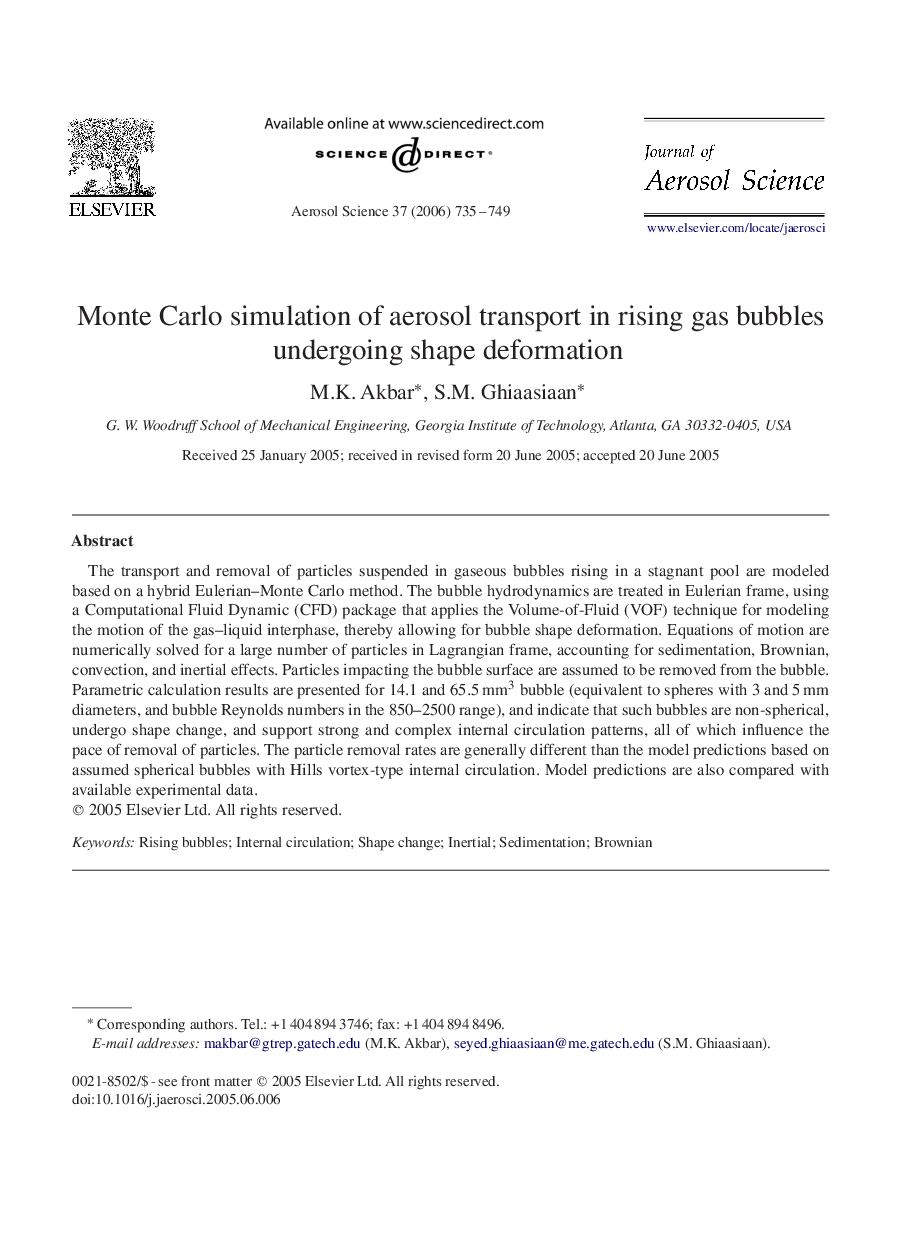| Article ID | Journal | Published Year | Pages | File Type |
|---|---|---|---|---|
| 4453331 | Journal of Aerosol Science | 2006 | 15 Pages |
The transport and removal of particles suspended in gaseous bubbles rising in a stagnant pool are modeled based on a hybrid Eulerian–Monte Carlo method. The bubble hydrodynamics are treated in Eulerian frame, using a Computational Fluid Dynamic (CFD) package that applies the Volume-of-Fluid (VOF) technique for modeling the motion of the gas–liquid interphase, thereby allowing for bubble shape deformation. Equations of motion are numerically solved for a large number of particles in Lagrangian frame, accounting for sedimentation, Brownian, convection, and inertial effects. Particles impacting the bubble surface are assumed to be removed from the bubble. Parametric calculation results are presented for 14.1 and 65.5mm3 bubble (equivalent to spheres with 3 and 5 mm diameters, and bubble Reynolds numbers in the 850–2500 range), and indicate that such bubbles are non-spherical, undergo shape change, and support strong and complex internal circulation patterns, all of which influence the pace of removal of particles. The particle removal rates are generally different than the model predictions based on assumed spherical bubbles with Hills vortex-type internal circulation. Model predictions are also compared with available experimental data.
